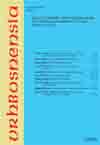Vjera vs. strah u Matejevu evanđelju
FAITH VS. FEAR IN MATTHEW’S GOSPEL
Author(s): Vinko MamićSubject(s): Christian Theology and Religion
Published by: Katolički bogoslovni fakultet
Keywords: faith; little faith; fear; implied reader
Summary/Abstract: This paper examines three passages of Matthew’s Gospel, which give insight into the author’s understanding of the relationship between faith and fear: 8:23-27, 14:22-33 and 28:1-10. The study is based on reader-response criticism, and focuses on the rhetorical finality of the texts. A simple etymological analysis of the nouns “faith” and “fear” in both Greek and Hebrew shows that these words are in basic contradiction: while the former stands for terms that indicate something “reliable” and “steady”; the latter derives from expressions denoting “trembling” and “escape”. In the three pericopes, the manifestations of the implied reader’s faith and fear assume the attitudes of their etymological settings. Although Matthew’s implied reader moves between faith and little faith, he or she never becomes an unbeliever. Likewise, when little faith prevails, the implied reader’s fear increases, but that fear never permanently separates the disciple from his Master. Finally, this study shows that the three accounts are shaped in such a way as to facilitate the full identification of the actual reader with the implied reader. The ultimate rhetorical purpose of this narrative strategy is to awaken the actual reader’s faith to the presence of the Risen Lord. Such faith opposes his or her fear and the temptation to escape from hostile life-realities, while assuring a steadfastness in following Jesus Christ.
Journal: Vrhbosnensia
- Issue Year: 2014
- Issue No: 1
- Page Range: 51-59
- Page Count: 9
- Language: Croatian

